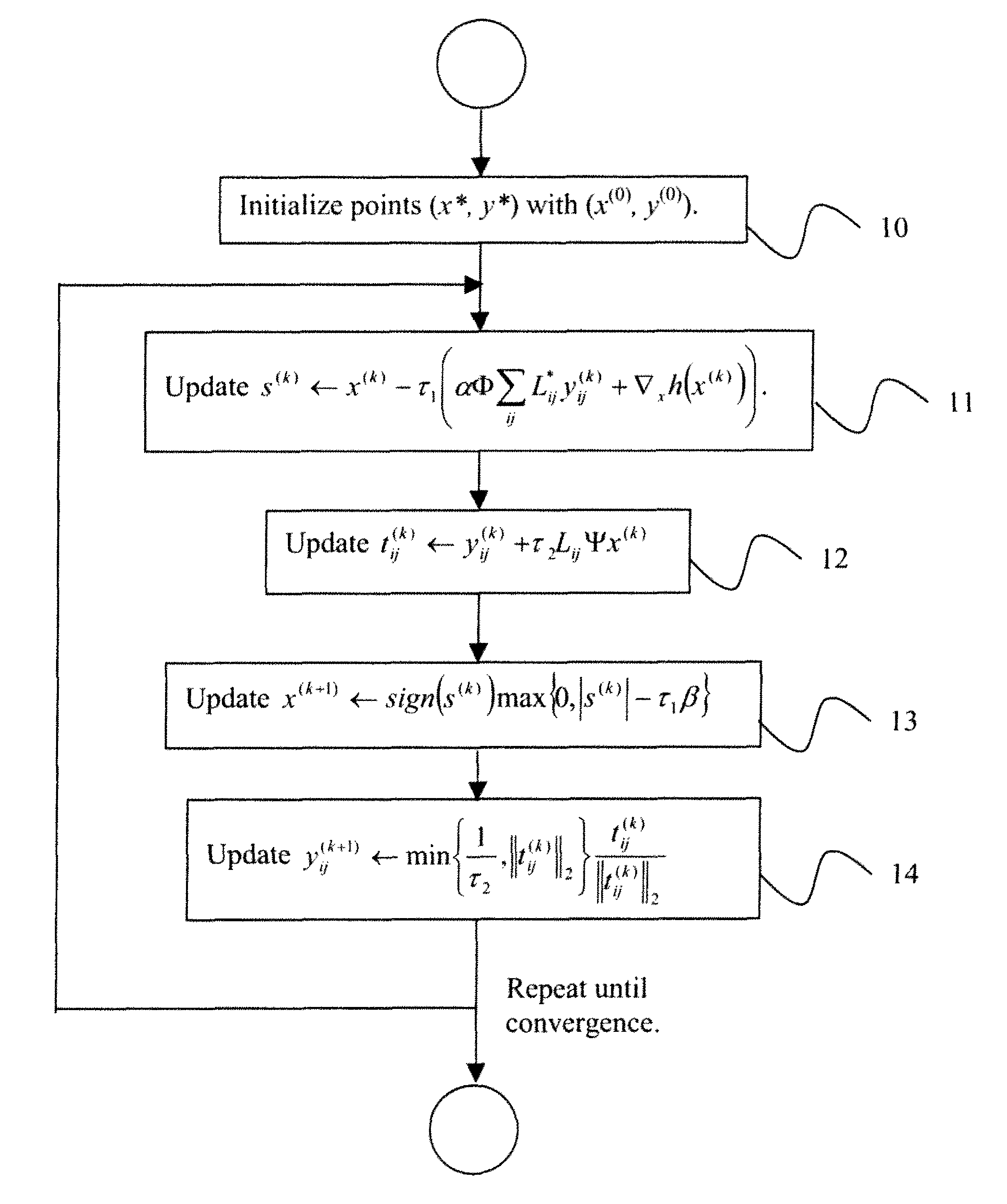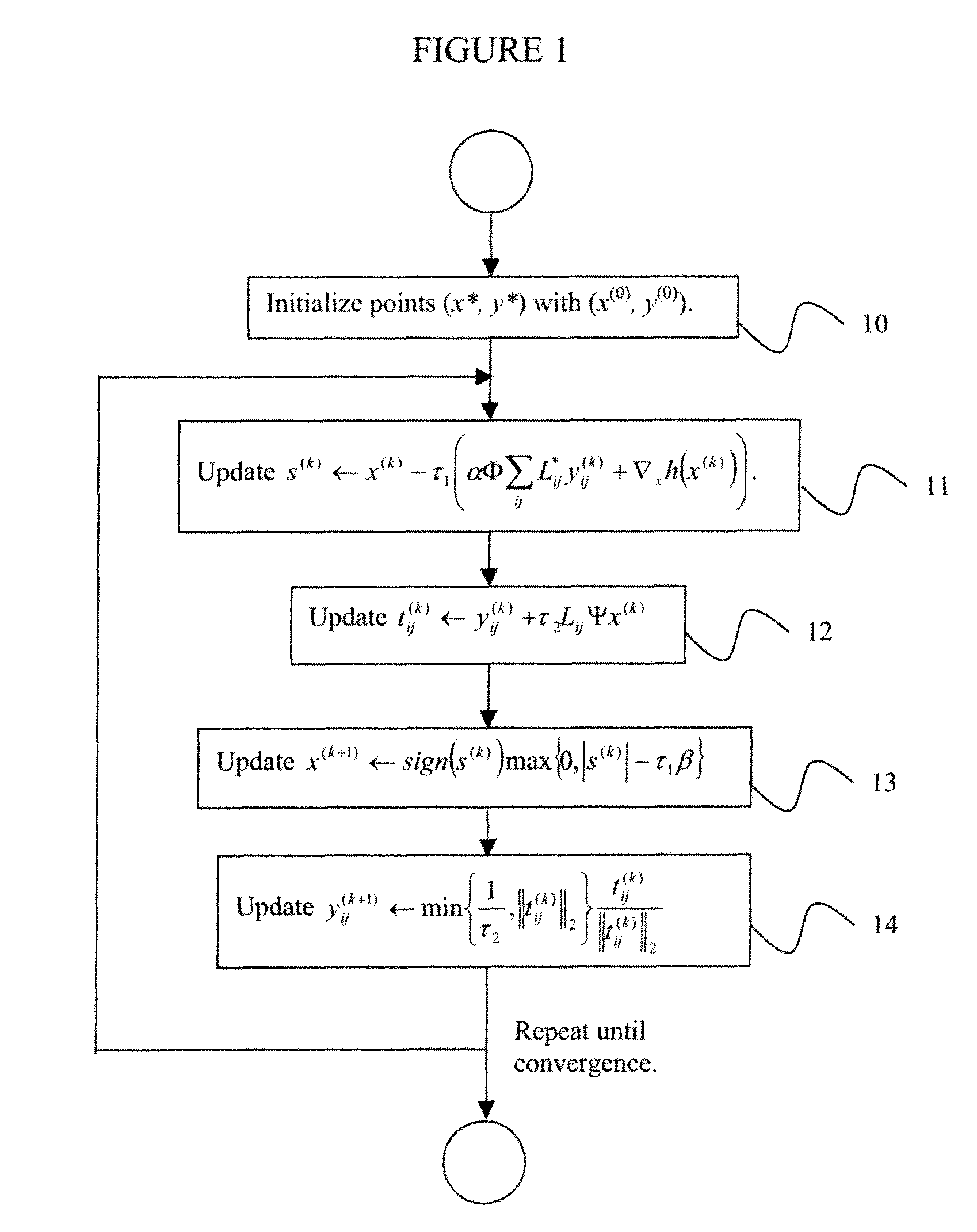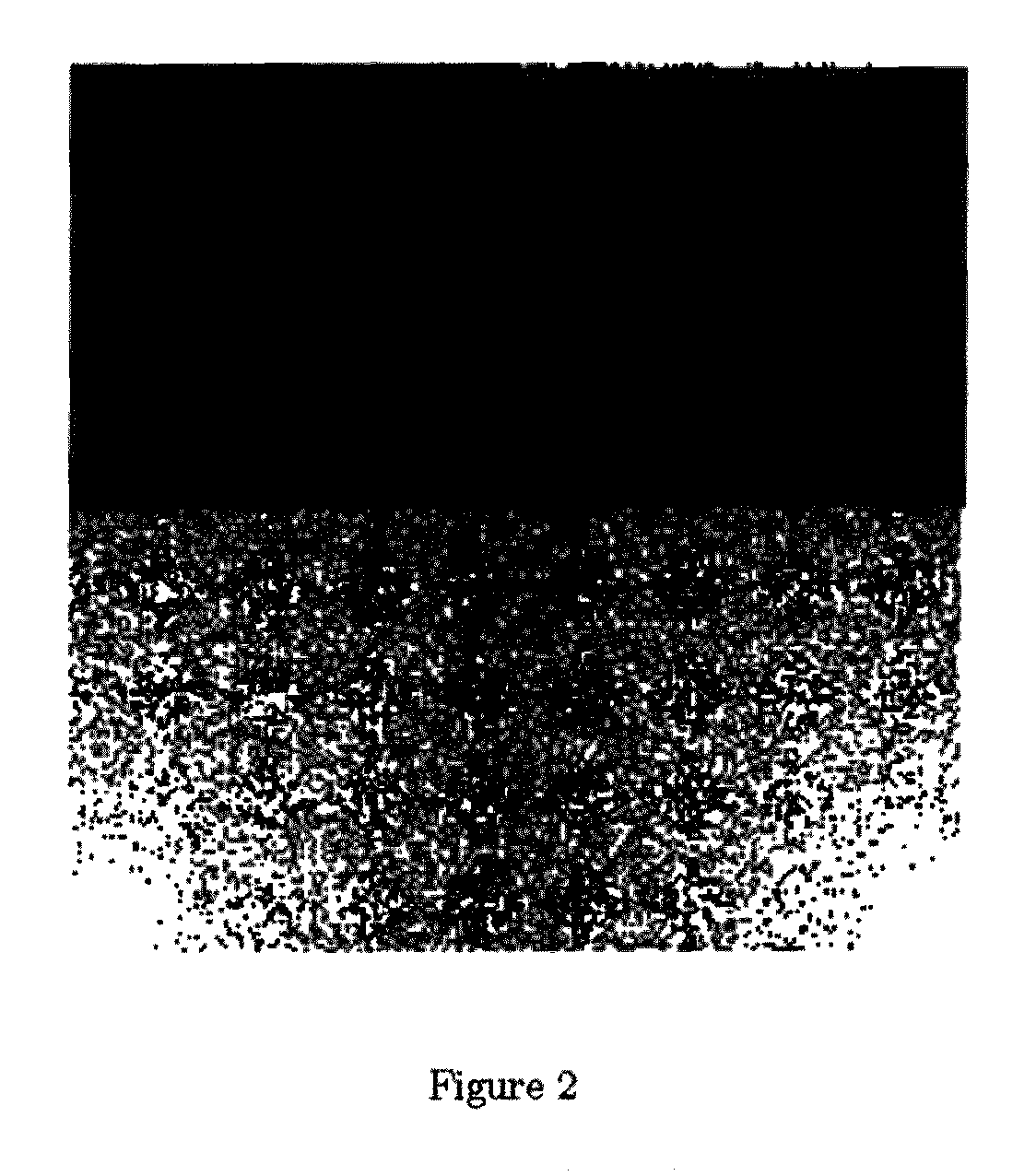System and method for fixed point continuation for total variation based compressed sensing imaging
a compressed sensing and fixed point continuation technology, applied in the field of compressed sensing reconstruction, can solve the problems of deteriorating the quality of acquired images, unable to achieve perfect reconstruction, and unable to achieve normal breathing, so as to achieve efficient mr image reconstruction and efficient line search
- Summary
- Abstract
- Description
- Claims
- Application Information
AI Technical Summary
Benefits of technology
Problems solved by technology
Method used
Image
Examples
Embodiment Construction
>a)-(f) depict an original Phantom image and recovered images with the same sampling ratios but different noise levels, according to an embodiment of the invention.
[0042]FIG. 4 is a table of numerical results for a Phantom image with different noise levels, according to an embodiment of the invention.
[0043]FIGS. 5(a)-(d) depict an original Renal Arteries image and recovered images with different sampling ratios, according to an embodiment of the invention.
[0044]FIGS. 6(a)-(d) depict an original Abdomen Extremities image and recovered images with different sampling ratios, according to an embodiment of the invention.
[0045]FIGS. 7(a)-(d) depict an original MR Human Full body image and recovered images with different sampling ratios, according to an embodiment of the invention.
[0046]FIG. 8 is a table of numerical results for different MR images with different sampling ratios, according to an embodiment of the invention.
[0047]FIG. 9 is a graph of relative errors of TVCMRI and FPC with d...
PUM
 Login to View More
Login to View More Abstract
Description
Claims
Application Information
 Login to View More
Login to View More - R&D
- Intellectual Property
- Life Sciences
- Materials
- Tech Scout
- Unparalleled Data Quality
- Higher Quality Content
- 60% Fewer Hallucinations
Browse by: Latest US Patents, China's latest patents, Technical Efficacy Thesaurus, Application Domain, Technology Topic, Popular Technical Reports.
© 2025 PatSnap. All rights reserved.Legal|Privacy policy|Modern Slavery Act Transparency Statement|Sitemap|About US| Contact US: help@patsnap.com



